Chapter 1: Introduction to Biology
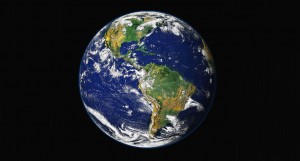
Viewed from space, Earth offers few clues about the diversity of life forms that reside there. The first forms of life on Earth are thought to have been microorganisms that existed for billions of years before plants and animals appeared. The mammals, birds, and flowers so familiar to us are all relatively recent, originating 130 to 200 million years ago. Humans have inhabited this planet for only the last 2.5 million years, and only in the last 200,000 years have humans started looking like we do today.
Learning Objectives
By the end of this section, you will be able to:
- Identify and describe the properties of life
- Describe the levels of organization among living things
Biology is the science that studies life. What exactly is life? This may sound like a silly question with an obvious answer, but it is not easy to define life. For example, a branch of biology called virology studies viruses, which exhibit some of the characteristics of living entities but lack others. It turns out that although viruses can attack living organisms, cause diseases, and even reproduce, they do not meet the criteria that biologists use to define life.
Properties of Life
All groups of living organisms share several key characteristics or functions: order, sensitivity or response to stimuli, reproduction, adaptation, growth and development, regulation, homeostasis, and energy processing. When viewed together, these eight characteristics serve to define life.
Order
Organisms are highly organized structures that consist of one or more cells. Even very simple, single-celled organisms are remarkably complex. Inside each cell, atoms make up molecules. These in turn make up cell components or organelles. Multicellular organisms, which may consist of millions of individual cells, have an advantage over single-celled organisms in that their cells can be specialized to perform specific functions, and even sacrificed in certain situations for the good of the organism as a whole. How these specialized cells come together to form organs such as the heart, lung, or skin in organisms like the toad shown in Figure 1. 2 will be discussed later.
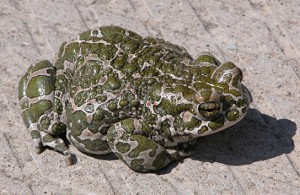
Sensitivity or Response to Stimuli
Organisms respond to diverse stimuli. For example, plants can bend toward a source of light or respond to touch. Even tiny bacteria can move toward or away from chemicals (a process called chemotaxis) or light (phototaxis). Movement toward a stimulus is considered a positive response, while movement away from a stimulus is considered a negative response.
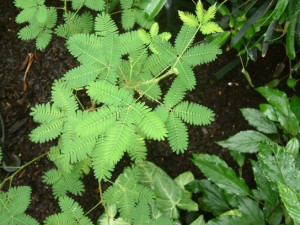
Concept in Action
Watch this video to see how the sensitive plant responds to a touch stimulus.
Print version – Use the QR code to play the video.

Reproduction
Single-celled organisms reproduce by first duplicating their DNA, which is the genetic material, and then dividing it equally as the cell prepares to divide to form two new cells. Many multicellular organisms (those made up of more than one cell) produce specialized reproductive cells that will form new individuals. When reproduction occurs, DNA containing genes is passed along to an organism’s offspring. These genes are the reason that the offspring will belong to the same species and will have characteristics similar to the parent, such as fur color and blood type.
Adaptation
All living organisms exhibit a “fit” to their environment. Biologists refer to this fit as adaptation and it is a consequence of evolution by natural selection, which operates in every lineage of reproducing organisms. Examples of adaptations are diverse and unique, from heat-resistant Archaea that live in boiling hot springs to the tongue length of a nectar-feeding moth that matches the size of the flower from which it feeds. All adaptations enhance the reproductive potential of the individual exhibiting them, including their ability to survive to reproduce. Adaptations are not constant. As an environment changes, natural selection causes the characteristics of the individuals in a population to track those changes.
Growth and Development
Organisms grow and develop according to specific instructions coded for by their genes. These genes provide instructions that will direct cellular growth and development, ensuring that a species’ young will grow up to exhibit many of the same characteristics as its parents.

Regulation
Even the smallest organisms are complex and require multiple regulatory mechanisms to coordinate internal functions, such as the transport of nutrients, response to stimuli, and coping with environmental stresses. For example, organ systems such as the digestive or circulatory systems perform specific functions like carrying oxygen throughout the body, removing wastes, delivering nutrients to every cell, and cooling the body.
Homeostasis
To function properly, cells require appropriate conditions such as proper temperature, pH, and concentrations of diverse chemicals. These conditions may, however, change from one moment to the next. Organisms are able to maintain internal conditions within a narrow range almost constantly, despite environmental changes, through a process called homeostasis or “steady state”—the ability of an organism to maintain constant internal conditions. For example, many organisms regulate their body temperature in a process known as thermoregulation. Organisms that live in cold climates, such as the polar bear, have body structures that help them withstand low temperatures and conserve body heat. In hot climates, organisms have methods (such as perspiration in humans or panting in dogs) that help them to shed excess body heat.
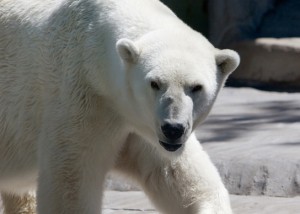
Energy Processing
All organisms (such as the California condor shown in Figure 1.6) use a source of energy for their metabolic activities. Some organisms capture energy from the sun and convert it into chemical energy in food; others use chemical energy from molecules they take in.
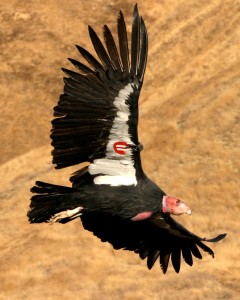
Levels of Organization of Living Things
Living things are highly organized and structured, following a hierarchy on a scale from small to large. The atom is the smallest and most fundamental unit of matter. It consists of a nucleus surrounded by electrons. Atoms form molecules. A molecule is a chemical structure consisting of at least two atoms held together by a chemical bond. Many molecules that are biologically important are macromolecules, large molecules that are typically formed by combining smaller units called monomers. An example of a macromolecule is deoxyribonucleic acid (DNA), which contains the instructions for the functioning of the organism that contains it.
Concept in Action
To see an animation of this DNA molecule, click here.
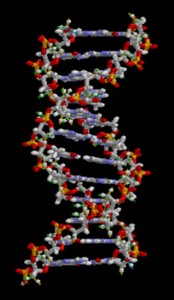

Print version – Use the QR code to play the video.
Some cells contain aggregates of macromolecules surrounded by membranes; these are called organelles. Organelles are small structures that exist within cells and perform specialized functions. All living things are made of cells; the cell itself is the smallest fundamental unit of structure and function in living organisms. (This requirement is why viruses are not considered living: they are not made of cells. To make new viruses, they have to invade and hijack a living cell; only then can they obtain the materials they need to reproduce.) Some organisms consist of a single cell and others are multicellular.
In most multicellular organisms, cells combine to make tissues, which are groups of similar cells carrying out the same function. Organs are collections of tissues grouped together based on a common function. An organ system is a higher level of organization that consists of functionally related organs. For example vertebrate animals have many organ systems, such as the circulatory system that transports blood throughout the body and to and from the lungs; it includes organs such as the heart and blood vessels. Organisms are individual living entities. For example, each tree in a forest is an organism. There are also single-celled organisms, such as bacteria, typically referred to as microorganisms.
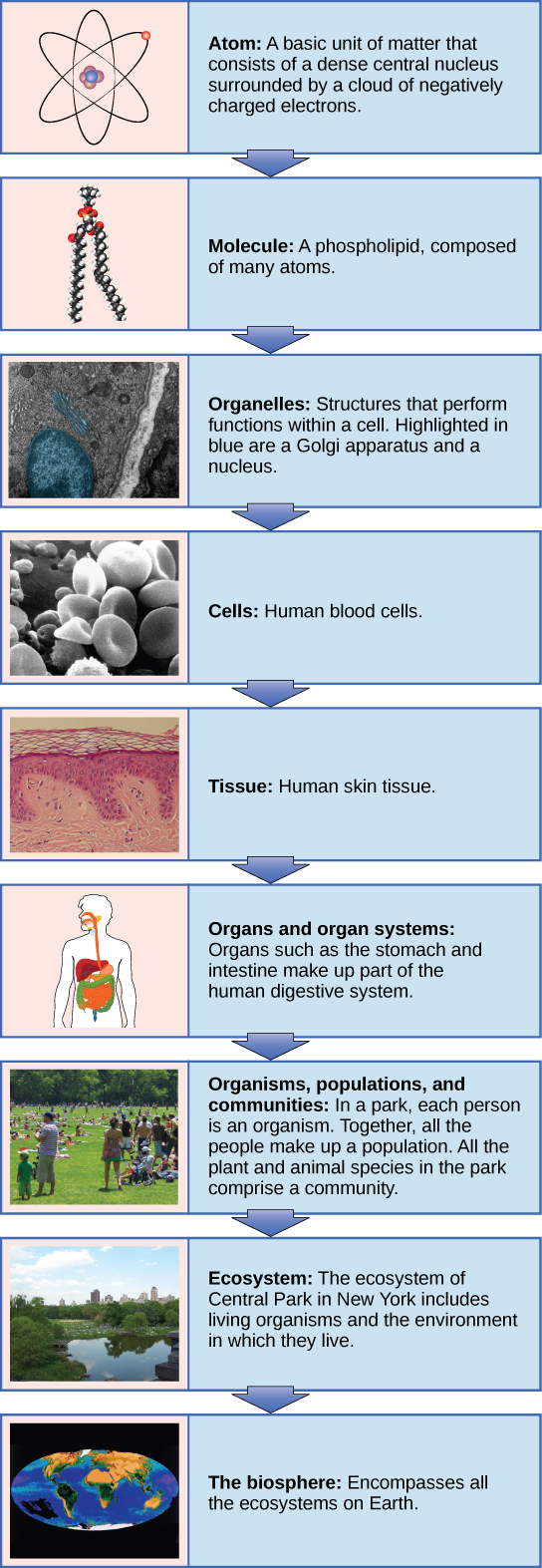
All the individuals of a species living within a specific area are collectively called a population. For example, a forest may include many white pine trees. All of these pine trees represent the population of white pine trees in this forest. Different populations may live in the same specific area. For example, the forest with the pine trees includes populations of flowering plants and also insects and microbial populations. A community is the set of populations inhabiting a particular area. For instance, all of the trees, flowers, insects, and other populations in a forest form the forest’s community. The forest itself is an ecosystem. An ecosystem consists of all the living things in a particular area together with the abiotic, or non-living, parts of that environment such as nitrogen in the soil or rainwater. At the highest level of organization, the biosphere is the collection of all ecosystems, and it represents the zones of life on Earth. It includes land, water, and portions of the atmosphere.
- Which of the following statements is false?
- Tissues exist within organs which exist within organ systems.
- Communities exist within populations which exist within ecosystems.
- Organelles exist within cells which exist within tissues.
- Communities exist within ecosystems which exist in the biosphere.
- The smallest unit of biological structure that meets the functional requirements of “living” is the ________.
- organ
- organelle
- cell
- macromolecule
- Which of the following sequences represents the hierarchy of biological organization from the most complex to the least complex level?
- organelle, tissue, biosphere, ecosystem, population
- organ, organism, tissue, organelle, molecule
- organism, community, biosphere, molecule, tissue, organ
- biosphere, ecosystem, community, population, organism
- Using examples, explain how biology can be studied from a microscopic approach to a global approach.
Answers
- B
- C
- D
- Researchers can approach biology from the smallest to the largest, and everything in between. For instance, an ecologist may study a population of individuals, the population’s community, the community’s ecosystem, and the ecosystem’s part in the biosphere. When studying an individual organism, a biologist could examine the cell and its organelles, the tissues that the cells make up, the organs and their respective organ systems, and the sum total—the organism itself.
Glossary
atom: a basic unit of matter that cannot be broken down by normal chemical reactions
biology: the study of living organisms and their interactions with one another and their environments
biosphere: a collection of all ecosystems on Earth
cell: the smallest fundamental unit of structure and function in living things
community: a set of populations inhabiting a particular area
ecosystem: all living things in a particular area together with the abiotic, nonliving parts of that environment
evolution: the process of gradual change in a population that can also lead to new species arising from older species
homeostasis: the ability of an organism to maintain constant internal conditions
macromolecule: a large molecule typically formed by the joining of smaller molecules
molecule: a chemical structure consisting of at least two atoms held together by a chemical bond
organ: a structure formed of tissues operating together to perform a common function
organ system: the higher level of organization that consists of functionally related organs
organelle: a membrane-bound compartment or sac within a cell
organism: an individual living entity
population: all individuals within a species living within a specific area
tissue: a group of similar cells carrying out the same function
Media Attribution
- Figure 1.1 by NASA © Public Domain
- Figure 1.2 by Ivengo(RUS) © Public Domain
- Figure 1.3 by Alex Lomas © CC BY (Attribution)
- Figure 1.4 by Pieter & Renée Lanser © CC BY (Attribution)
- Figure 1.5 by David © CC BY (Attribution)
- Figure 1.6 by Pacific Southwest Region USFWS © CC BY (Attribution)
- Figure 1.7 by Brian0918 © Public Domain
- Figure 1.8
- “molecule”: modification of work by Jane Whitney;
- “organelles”: modification of work by Louisa Howard;
- “cells”: modification of work by Bruce Wetzel, Harry Schaefer, National Cancer Institute;
- “tissue”: modification of work by “Kilbad” © Public Domain
- “organs”: modification of work by Mariana Ruiz Villareal, Joaquim Alves Gaspar;
- “organisms”: modification of work by Peter Dutton;
- “ecosystem”: modification of work by “gigi4791″ © CC BY (Attribution)
- “biosphere”: modification of work by NASA © Public Domain

